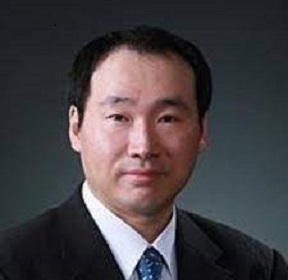Keynote Forum
Huang Wei Ling
BrazilTitle: Can We Treat Malignant Thyroid Cancer Without Using Chemotherapy, Radiotherapy or Surgery?
Abstract:
Thyroid malignant cancer is the most common malignant cancer in all endocrine system. It represents 3.8% of all cancers in United States and an etimation that more than 62 thosand patients had this cancer in 2015 and quite 2 thousand deaths due to this disease. In traditional Chinese medicine, cancer comes from energy deficiency and Heat retention. Purpose: The purpose of this study is to demonstrate that patients with mailgnant thyroid cancer have chakras’ energy centers deficient in energy and the treatment rebalancing these energy is an import tool to treat cancer condition without using chemotherapy, radiotherapy or surgery. Methods: through one case report of 70 year-old diabetic patient with diagnosis of malignant thyroid tumor in 2018. Between the period of diagnosis and surgery (3 months), she went to an acupuncture clinic to treat her stress condition after knowing her recent diagnosis. Her Chinese dignosis was Kidney Yin deficiency and Heat retention. She did chakras’ energy centers measurements and all her chgakras’ were in the minimum level, rated in one out of eight. Treatment using Chinese dietary counseling, auricular acupuncture with apex ear bloodleting, systemic acupuncture and replenishment of the chakras’ energy centers using highly dillutd medications (homeopathies according to the theory Constituitional Homeopathy of the Five Elements Based on Traditional Chinese Medicine were used in her treatment).
Biography:
Huang Wei Ling, born in Taiwan, raised and graduated in medicine in Brazil, specialist in infectious and parasitic diseases, a General Practitioner and Parenteral and Enteral Medical Nutrition Therapist. Once in charge of the Hospital Infection Control Service of the City of Franca’s General Hospital, she was responsible for the control of all prescribed antimicrobial medication and received an award for the best paper presented at the Brazilian Hospital Infection Control Congress in 1998. Since 1997, she works with the approach and treatment of all chronic diseases in a holistic way, with treatment guided through the teachings of Traditional Chinese Medicine and Hippocrates. Researcher in the University of São Paulo, in the Ophthalmology department from 2012 to 2013.Author of the theory Constitutional Homeopathy of the Five Elements Based on Traditional Chinese Medicine. Author of more than 60 publications about treatment of variety of diseases rebalancing the internal energy using Hippocrates thoughts.
Hee-Young Kim
KoreaTitle: Eustachian tube function should be tested before vestibular function
Abstract:
Eustachian tube dysfunction (ETD) is defined by symptoms and signs of pressure dysregulation in the middle ear. Vertigo associated with ETD is caused in most (and perhaps all) instances by unilateral Eustachian tube obstruction or by more complete obstruction one side than the other. Vertigo due to unilateral ETD was first defined as “alternobaric vertigo” (or ‘vertigo altenobarica’), by Dr. Claes Lundgren who coined the term in 1965 to describe vertigo in deep-sea divers. The fundamental mechanism of ABV is asymmetrical middle ear pressures. This diagnosis can also be applied to cases at ground level. Persistent ABV at ground level is associated with abnormal vestibular function test results. ABV should be differentiated from any condition conferring active risk of vertigo or severe disequilibrium. Vestibular organs are affected by pressure in the middle ears which makes them dependent variable organs. Every clinical test currently used to assess vestibular function should ideally be performed in a state where pressures in the middle ear cavities are well within normal range, and perfectly balanced between the ears. Taking these points into consideration, I would like to (1) propose that ABV be included in the ETD Consensus Statement as an official symptom of ETD, and that Eustachian tube catheterization also be recommended as a method for diagnosis and management of ETD. (2) reiterate that Eustachian tube function should be tested before vestibular function, and (3) call for case studies and research into cases of vertigo where Eustachian tube function was assessed before vestibular function.
Biography:
Dr. Hee-Young Kim is an otolaryngologist and director of Kim Ear, Nose and Throat Clinic, Seoul, Republic of Korea. He received his Doctor of Medicine, and PhD in pathology from Chung-Ang University, South Korea. Dr. Kim’s area of academic interest is Eustachian tube dysfunction and he has published on topics such as Vertigo: Eustachian tube function should be assessed before vestibular function, Eustachian tube catheterization, vertigo due to Eustachian tube obstruction in peer reviewed journals. Dr. Kim was awarded the Albert Nelson Marquis Lifetime Achievement Award. Since 2016, he has served as the Editor-in-Chief of the Journal of Otolaryngology-ENT Research. (Up to 100 words)
Speakers
Keynote Forum
Hee-Young Kim
KoreaTitle: Eustachian tube function should be tested before vestibular function
Abstract:
Eustachian tube dysfunction (ETD) is defined by symptoms and signs of pressure dysregulation in the middle ear. Vertigo associated with ETD is caused in most (and perhaps all) instances by unilateral Eustachian tube obstruction or by more complete obstruction one side than the other. Vertigo due to unilateral ETD was first defined as “alternobaric vertigo” (or ‘vertigo altenobarica’), by Dr. Claes Lundgren who coined the term in 1965 to describe vertigo in deep-sea divers. The fundamental mechanism of ABV is asymmetrical middle ear pressures. This diagnosis can also be applied to cases at ground level. Persistent ABV at ground level is associated with abnormal vestibular function test results. ABV should be differentiated from any condition conferring active risk of vertigo or severe disequilibrium. Vestibular organs are affected by pressure in the middle ears which makes them dependent variable organs. Every clinical test currently used to assess vestibular function should ideally be performed in a state where pressures in the middle ear cavities are well within normal range, and perfectly balanced between the ears. Taking these points into consideration, I would like to (1) propose that ABV be included in the ETD Consensus Statement as an official symptom of ETD, and that Eustachian tube catheterization also be recommended as a method for diagnosis and management of ETD. (2) reiterate that Eustachian tube function should be tested before vestibular function, and (3) call for case studies and research into cases of vertigo where Eustachian tube function was assessed before vestibular function.
Biography:
Dr. Hee-Young Kim is an otolaryngologist and director of Kim Ear, Nose and Throat Clinic, Seoul, Republic of Korea. He received his Doctor of Medicine, and PhD in pathology from Chung-Ang University, South Korea. Dr. Kim’s area of academic interest is Eustachian tube dysfunction and he has published on topics such as Vertigo: Eustachian tube function should be assessed before vestibular function, Eustachian tube catheterization, vertigo due to Eustachian tube obstruction in peer reviewed journals. Dr. Kim was awarded the Albert Nelson Marquis Lifetime Achievement Award. Since 2016, he has served as the Editor-in-Chief of the Journal of Otolaryngology-ENT Research. (Up to 100 words)



